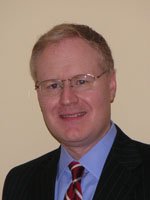City Puts Financial Tools to Work Building Downtown
by Matthew Webster

For the first time in the U.S., a private facilities operator joined with a major city to finance an arena.
The list of new projects in Downtown Kansas City is impressive: H&R Block’s world headquarters, Cordish’s KC Live entertainment district, Sprint Arena, a redeveloped President Hotel, a massive addition to Bartle Hall and a planned east side redevelopment encompassing new offices for JE Dunn and affordable residential development led by Swope Community Builders. Not since the 1930s has Kansas City seen such concentrated development of downtown projects in such a short period of time. All of these projects are large, capital intensive and have one important thing in common—they have all required substantial public investment.
The new development momentum coincides with three major initiatives that have taken hold in Kansas City within the last few years. First, the recognition that public financial support is a vital catalyst to spur urban projects. Second, that critical mass and concentrated development efforts create an environment that builds momentum, allowing several large scale projects to proceed simultaneously. Third, the city has systematically deployed its considerable financial strength to provide low-cost publicly financed capital for public-private partnerships.
For the first time, the city has coherently deployed the financial incentive programs that Missouri offers and, in the case of the Mayor and the Economic Development Commission’s work on the Missouri Downtown and Rural Economic Stimulus Act (“MODESA”), created new financial tools when they were needed.
The H&R Block project was conceived in conjunction with the Cordish entertainment district to take advantage of the redevelopment opportunity afforded by Block’s growth and need for additional office space. To retain Block’s jobs in Missouri and prevent a Quintiles-like departure to the Kansas suburbs, the city and state agreed to rebate earnings and property taxes to Block to defray the cost of expensive downtown redevelopment. In the case of the entertainment district the city was proactive. After identifying Cordish as a national leader in urban entertainment district development, it provided free land, parking and additional financing for a portion of the construction costs. These funds were raised through the sale of Kansas City Industrial Development Authority bonds that will be repaid from the tax increments generated by retail sales taxes, city earnings taxes and property taxes. The state participated through the first ever use of MODESA, which rebates sales and income taxes to pay bond debt service. A study commissioned by Missouri estimated that more than 70% of the sales within the entertainment district will be net new to Missouri. As structured, the bonds should be repaid within 25 years.
The Sprint Arena is also an important case study. For the first time in the U.S., a private facilities operator, Anschutz Entertainment Group (AEG), joined with a major city to finance an arena. AEG’s $53 million in private funds and the city’s $223 million in public funds will provide for the total construction; in return AEG will retain revenues from the arena for 35 years (with revenue sharing to the city if certain profitability benchmarks are met). The city’s financial contribution comes from bonds repaid from voter-approved license fees collected on hotel rooms and car rentals.
The common denominator in all these projects is the city use of its investment-grade credit rating and its ability to issue low interest rate, tax-exempt debt. By providing low cost capital to match private investment, the city successfully competed against the continuing trend of sprawl and suburbanization that has swept the area over the last 50 years.
But when does Kansas City stop using incentives? The city can stop when the urban core attracts development capital without them. The city’s challenge is exemplified by the recent trend on both sides of the state line in which prosperous suburbs are using some of the same tax incentives to move viable businesses out of the city. Given that the cost of urban redevelopment is not likely to decline soon, an abrupt end to Kansas City’s current incentive structure will result in a wholesale loss of retail and office development to suburban locations that will ultimately lead to a shrinking tax base and future fiscal strain.
Matthew Webster is a vice president in the public finance department of Oppenheimer & Co., an investment banking and brokerage firm with offices in Kansas City. He can be reached by phone at 816-932-7200 or by email at matt.webster@opco.com.